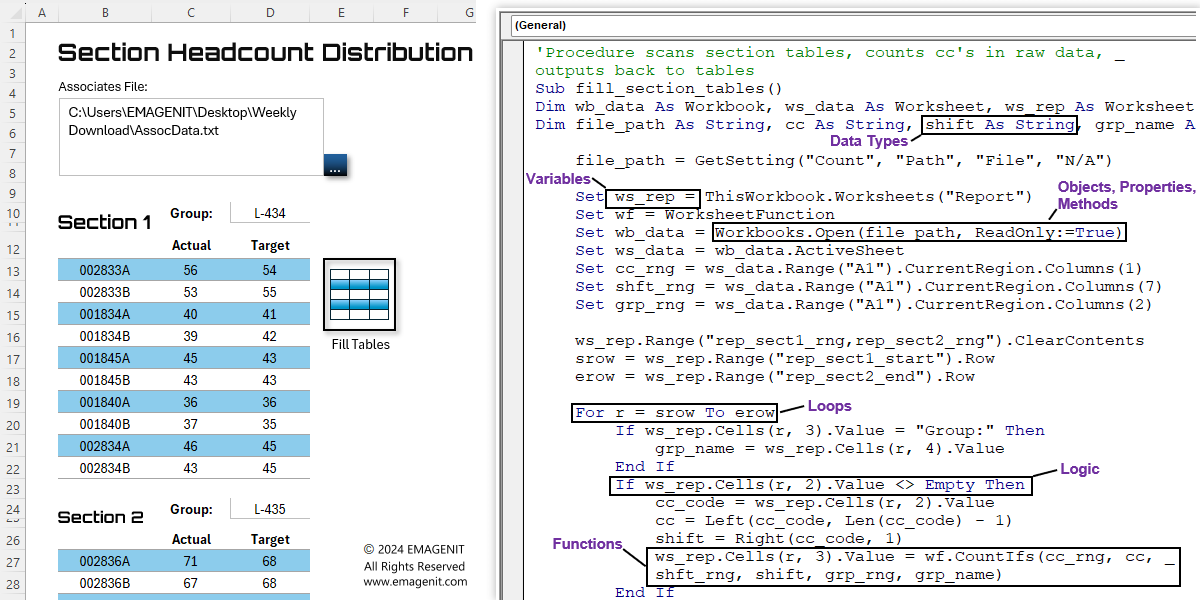| Schedule | Classes | Onsites | Manuals | Customers | Contact | About |
This page reviews Excel VBA, how it works, and how it is used to command Microsoft Excel and its various features.

Additional Tutorial Topics:
Visual Basic for Applications or VBA is a computer programming language which is used to automate Microsoft Excel's functionality and perform simple to complex tasks. VBA procedures are also referred to as "Excel Macros", "VBA Macros" or just plain "Macros". Microsoft Excel as well as all major Microsoft Office products like Word, PowerPoint, Access, Outlook come standard with VBA. You do not have to purchase it.
Do not confuse VBA with VB.Net. VB.Net is VBA's "older sibling" and while it shares many of VBA's good attributes and a whole lot more, it is a lot more difficult to use and requires a lot of time and knowledge to master. VBA on the other hand is very easy to operate and learn and can be used as a jumping off point to get into VB.NET among other languages.
VBA controls Microsoft Excel by means of writing and running a procedure (i.e. macro). VBA procedures > are written in the VBA Editor > which you can get to by pressing Alt+F11 in Excel.
Excel commands are typed in the computer code that tell Excel what to do. In addition to just Excel commands, VBA also possesses other computer programming elements like logic, loops, variables, functions... that allow very sophisticated programs to be developed that rival or surpass many programs on the market today.
Using VBA with Excel, powerful analysis tools can be developed quickly and with minimum cost. We should know, we have been building Excel software for clients since 1998.
In order to use VBA with Microsoft Excel > effectively, Microsoft Excel’s operational capabilities must be well understood along with its program elements like data entry, filters, charts, copy/paste, PivotTables...etc. Advanced formula construction beyond the basics is not required since VBA eliminates the need to create those horrible mega formulas that you have probably seen before.

Scroll < > picture if hidden.
Excel Training Services
Excel Classes - Business and Industry
- Beginning Excel for Business and Industry
- Intermediate Excel for Business and Industry
- Advanced Excel for Business and Industry
- Excel Dashboards for Business and Industry
- Beginning Excel VBA for Business and Industry
Excel Classes - Engineers / Scientists
- Microsoft Excel for Engineers for Scientists
- Excel Data Analysis for Engineers and Scientists
- Excel VBA for Engineers and Scientists
- Excel VBA Data Analysis for Engineers and Scientists
Microsoft Excel Manuals
- Microsoft Excel Solutions Handbook
- Creating Advanced Excel VBA Apps
- Excel VBA Handbook for Engineers and Scientists
- Excel VBA App Design for Engineers and Scientists
EMAGENIT Company Information
US Military
Copyright © 2025
EMAGENIT All Rights Reserved